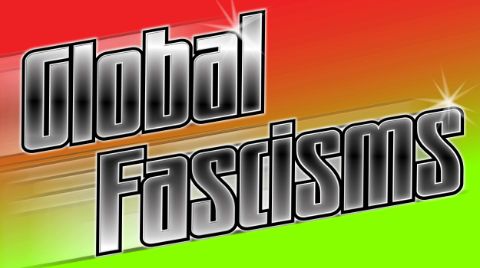Global Fascisms
Exhibition
13 September–7 December 2025

Visual: Yukiko
The exhibition Global Fascisms critically examines the aesthetic, social, and political dynamics of fascism, questioning its appeal and ideological mechanisms. A key aim is to understand fascism not only as a historical phenomenon, but also as an ongoing global threat that transcends its historically confined definition, manifesting in diverse political, cultural, and social contexts today. Focusing on the historical and contemporary contexts in which far-right ideologies thrive, the exhibition interrogates contested notions such as ‘identity’, ‘community’, and ‘belonging’.
The exhibition brings together works by around fifty international artists who respond to the rise of fascist ideologies through a variety of media, including painting, film, performance, discourse, publications, and digital formats. Historical artworks complement the group exhibition, creating surprising connections between past and present. The exhibition offers insights into the ideological seduction and aesthetics of fascist ideologies, while analysing the social and technological developments underlying these movements.
From the role of social media in creating echo chambers that amplify radicalization, to the invocation of nostalgic myths of ‘golden ages’ as tools of authoritarian rhetoric, the exhibition explores the mechanisms that sustain these ideologies. It also considers the interplay of contemporary issues such as economic inequality, migration, and the politicization of religion in fuelling nationalist sentiments.
By integrating art with rigorous interdisciplinary research, Global Fascisms promotes new ways of understanding and confronting these pressing issues at a critical moment when electorates worldwide are shifting dramatically towards right-wing, far-right, and authoritarian movements. It positions art not only as a medium for reflection, but as an active force in challenging authoritarian aesthetics and ideologies.
Read the curatorial essay in full here.
With contributions by:
aaajiao, Pio Abad & Frances Wadsworth Jones, Jane Alexander, Matthew Barney, Vikrant Bhise, Michaël Borremans, Carl-von-Ossietzky-Gemeinschaftsschule with Alexandre Decoupigny and Claire Fristot, Shu Lea Cheang, Hou Chun-Ming, Eli Cortiñas, Andrew Esiebo, Niklas Goldbach, Hao Jingban, Daniel Hernández-Salazar, Hannah Höch, Karolina Jabłońska, Radu Jude & Adrian Cioflâncă, Yoonsuk Jung, Gülsün Karamustafa, Martin Kippenberger, Josh Kline, Firenze Lai, Daniel Lannes, Maria Lassnig, Franz Lehmkuhl, Lawrence Lemaoana, Carlos Leppe, Anna Maria Maiolino, Sliman Mansour, Ciprian Mureșan, Nguyễn Tân Hoàng, Mussunda N’zombo, Pınar Öğrenci, Mimi Ọnụọha, Raking Leaves, Robin Rhode, Glauber Rocha, Roee Rosen, Julia Scher, Sara Sejin Chang (Sara van der Heide), Mithu Sen, Sana Shahmuradova Tanska, Maree Sheehan, Chulayarnnon Siriphol, Sunwoo Hoon, Fuyuhiko Takata, Grace Dorothée Tong, Top lista nadrealista & Nadreality Show, Mona Vătămanu & Florin Tudor (with Ilinca Manolache)
Mediathek
Gallery and audios of the project are available in the HKW Mediathek.